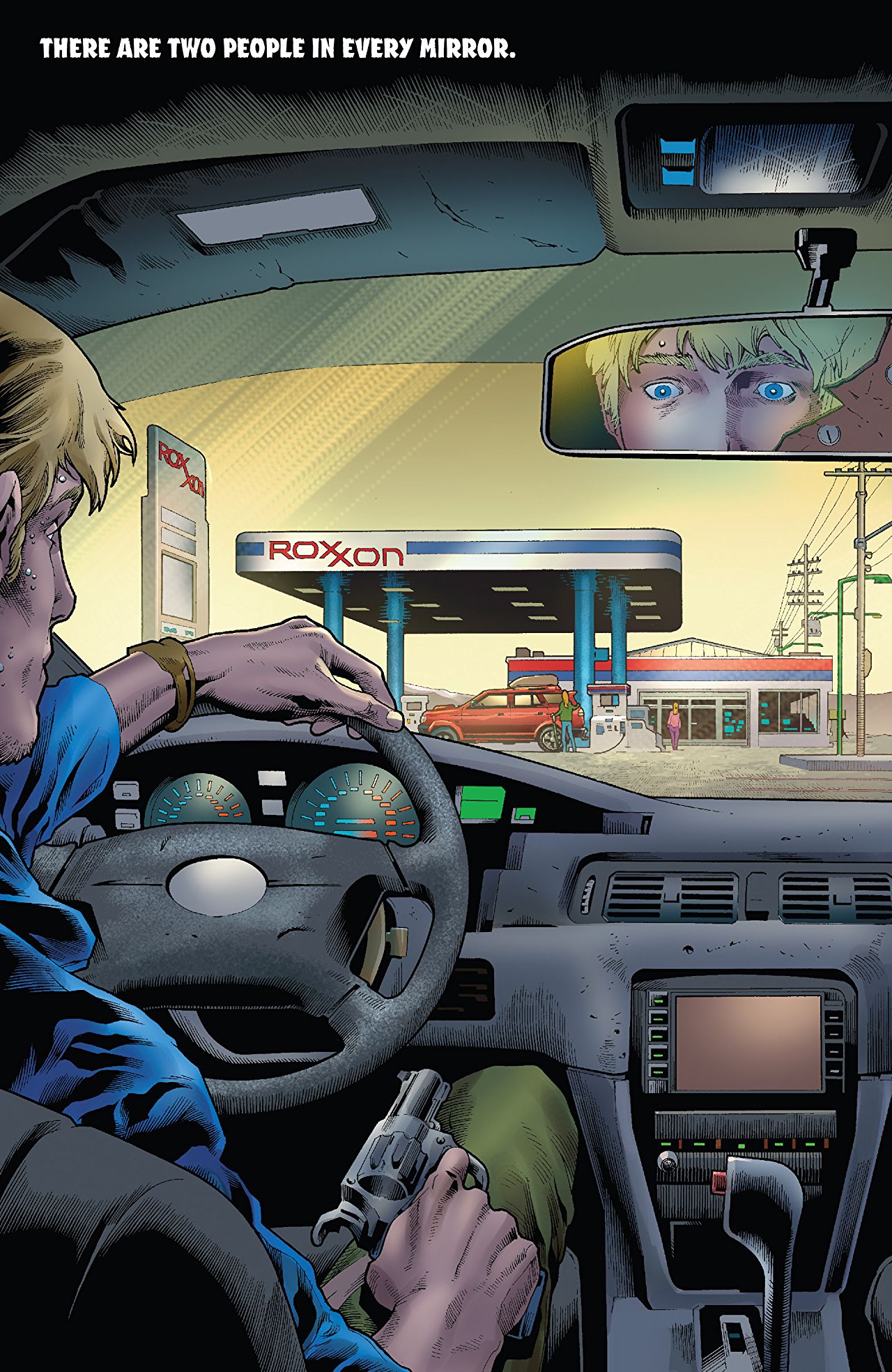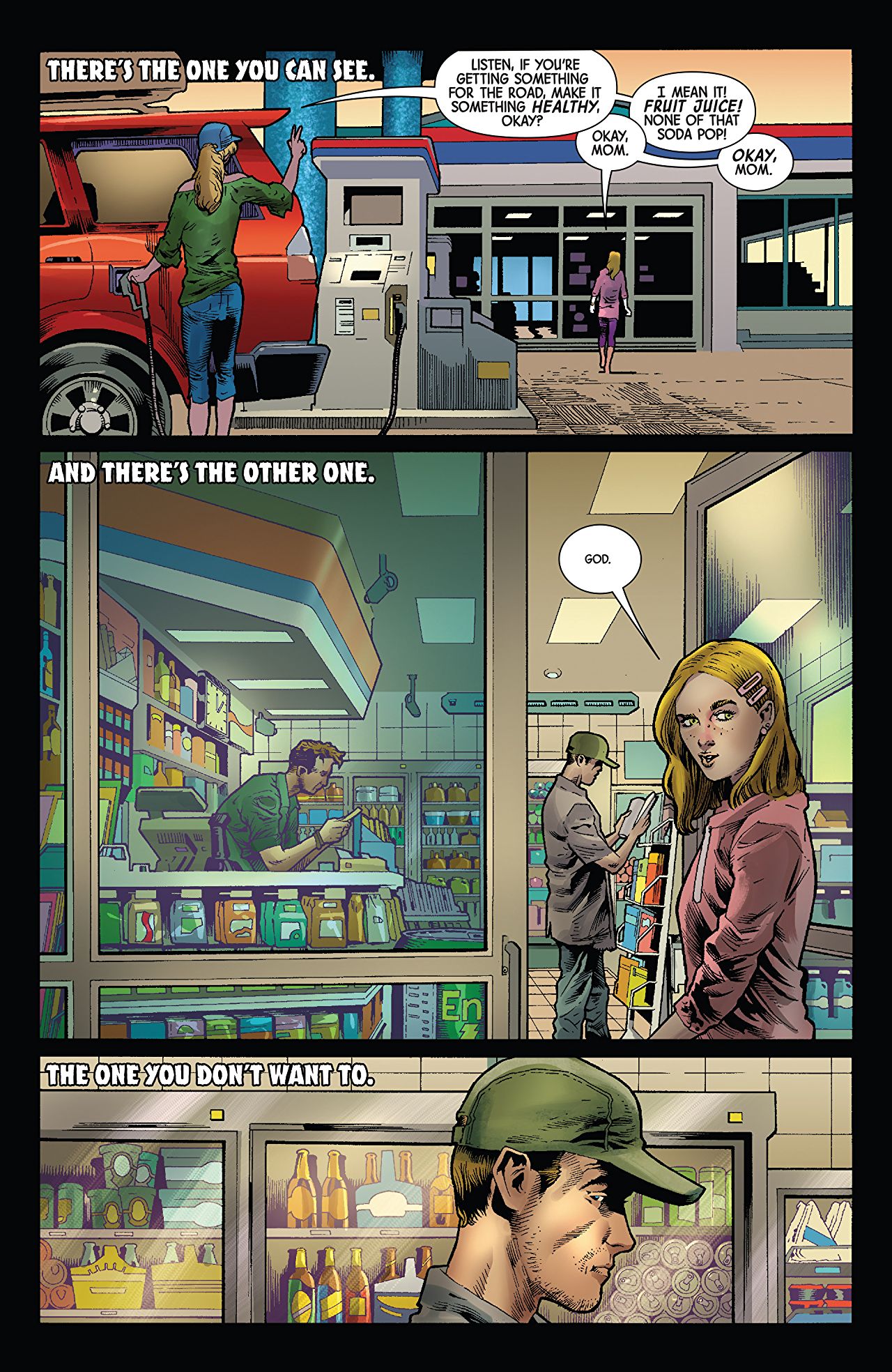THIS REVIEW OF ‘THE IMMORTAL HULK’ #1 CONTAINS SPOILERS.
By Don Alsafi. The Hulk has been one of the mainstays of the Marvel Universe since its earliest inception, with The Incredible Hulk #1 premiering in 1962 just a scant few months after the debut of The Fantastic Four. But despite an eerie first outing by Stan Lee and Jack Kirby, the new title was cancelled after six issues. The massive green monster kept popping up in other titles though, and the following year Stan brought back the Hulk (with the help of Steve Ditko) in the pages of Tales to Astonish. This time the formula was much more successful, and a Hulk comic could subsequently be found on the stands for the next five decades.
But in the 2016 crossover event Civil War II, Bruce Banner was shot and killed by Hawkeye, apparently at his behest. Banner has thus been dead for the past two years, with the Hulk-sized hole in Marvel’s publishing line filled in by the likes of teenage genius Amadeus Cho (in the pages of The Totally Awesome Hulk) and Bruce’s cousin Jennifer Walters (whose uncharacteristically rage-filled She-Hulk persona was seen in a comic simply titled Hulk). Both characters’ titles have since come to an end, though Cho continues to be part of the Champions team of young heroes, and Jen is currently dealing with the threat of the Celestials in the opening arc of the new Avengers title.
But Bruce? Bruce remained gone. At least until a couple of months ago, when he was resurrected in the course of the weekly Avengers: No Surrender storyline. But lest you think that he’s back to his old “Hulk smash!” ways, a warning: This isn’t the Hulk you once knew. No, it’s something darker and far more terrifying…
Written by Al Ewing.
Art by Joe Bennett and Ruy José.
Colors by Paul Mounts.
Letters by VC’s Cory Petit.
A Hulk comic that pulls no punches. The Immortal Hulk is written by British scribe Al Ewing, whose ridiculously over-the-top interactive miniseries You Are Deadpool tickled readers over the past month. Penciller Joe Bennett is a Brazilian artist who’s been working in comics for twenty-five years, and who in recent months could be seen illustrating Marvel’s high-profile Phoenix Resurrection: The Return of Jean Grey miniseries, and Christopher Priest’s excellent Deathstroke ongoing for DC.
From the outset, it’s clear that this latest iteration no longer features the shouty green hero long familiar to the mainstream public via the likes of cartoons, a 1970s live-action TV show, or the current crop of films from the MCU. Instead, this comic foregrounds feelings of dread and tragedy, as it opens with a gas station robbery going badly awry, and leading to the shooting deaths of the station attendant, a twelve-year-old girl – and Bruce Banner. Gone are the halcyon days when a Hulk story improbably avoided any casualties, as this comic quickly earns its T+ rating on the basis of tone and themes alone. (Although that’s also bolstered by the inclusion of a non-obfuscated profanity – something traditionally unthinkable in the pages of a Marvel comic, outside of its occasional Mature Readers imprint.)
But later that night the corpse of Bruce Banner wakes up once more and transforms. And then the monster tracks down those responsible for the tragedy, and things continue to get worse…

Interior page from ‘The Immortal Hulk’ #1. Art by Joe Bennett, Ruy José, Paul Mounts, and Cory Petit/Marvel Comics
Multiple personalities. The Hulk was arguably Marvel’s character most in need of a refocus – as seems evident in the varied approaches which have been tried and discarded over the years. His first series launched with a strong debut, then inexplicably changed up its tone and concept with every subsequent issue. (No wonder that initial outing didn’t make it past #6.) The following twenty years solidified in the public consciousness the “Hulk smash!” view of the character, and it’s still this childish temper-tantrum depiction which most informs the MCU version today. By the late 1980s, writer Peter David had begun to explore more interesting ideas over the course of his mighty twelve-year run: first by introducing the gray “Joe Fixit” persona (a craftily intelligent and surly Hulk who worked as a mob enforcer in Vegas), and then by positing that all these different approaches – and different Hulks – were simply the result of long-repressed childhood trauma manifesting as dissociative identity disorder.
And yet still the question remains: Just who exactly is the Hulk?
It can be frustrating for fans when a long-running character is taken off the table for a few years – but the potential upside is that the publisher can have the breathing room necessary to reassess the character from the bottom up. (Rather than simply passing on the status quo to the next writer in line.) They can ensure that the character’s return fully embraces the elements that made the property so successful over the decades – or else rethink the concept, and do something new. Impressively, this latest re-envisioning somehow manages to do both!

Interior page from ‘The Immortal Hulk’ #1. Art by Joe Bennett, Ruy José, Paul Mounts, and Cory Petit/Marvel Comics
The monster in the mirror. Stan Lee and Jack Kirby’s initial conception of the Hulk took as its most obvious inspiration the hero/monster duality posed in The Strange Case of Dr. Jekyll and Mr. Hyde. As in Robert Louis Stevenson’s novel, the effectively creepy The Incredible Hulk #1 showed scientist Bruce Banner unwillingly transforming into a powerful, amoral being at the close of each day – and the realization that he could do nothing to stop it haunted him. These origins and antecedents are clearly at the forefront of Al Ewing’s mind, as the comic opens with an entirely black page bearing only a quote on the nature of mankind from analytical psychology founder Carl Jung. (Recall too that one of the central concepts of Jungian psychology is that of the shadow self – an idea that the comic explicitly examines over the course of the story.)
Thus, this interpretation sees Bruce Banner once again turning into the Hulk each night – but that’s not all. The classic “dumb Hulk” version historically emphasized the creature’s power as an unstoppable engine of destruction. But even the very title, The Immortal Hulk, now takes that concept a step further. “What can stop the Hulk,” it seems to ask? Nothing. Not even death. In 1962, Banner was terrified by the approach of night, worried over what mayhem might be wrought. But now he’s discovering that even if he’s shot and killed – the monster will get up again. The monster keeps coming back.
And there’s nothing he can do to stop it.

Interior page from ‘The Immortal Hulk’ #1. Art by Joe Bennett, Ruy José, Paul Mounts, and Cory Petit/Marvel Comics
Big questions with disturbing answers. When you really think about it, the five-decade publishing history of the Hulk is something of an oddity. After all, the “classic” incarnation most readers know is little more than a gamma-irradiated personification of anger. But the thing is: Anger, on its own? Just isn’t that interesting.
While The Immortal Hulk #1 has no shortage of mayhem and damage – chillingly conveyed by Joe Bennett, inker Ruy José and colorist Paul Mounts – the comic doesn’t stop with simply laying that destruction at our feet, as so many Hulk stories have done in the past. It doesn’t just show us a senseless tragedy, then blithely grant us the catharsis of seeing the offenders get their comeuppance. It shows us some of the monsters in this world, and the monster who fights them. And it asks if the one is any better than the other.
Nietzsche had some thoughts on that. And Carl Jung read Nietzsche. Funny how it all comes around.
The Immortal Hulk is terror, unease, and psychological dread, and it’s not afraid to gaze into the abyss.
But beware of what might be looking back out…
8.5 out of 10














